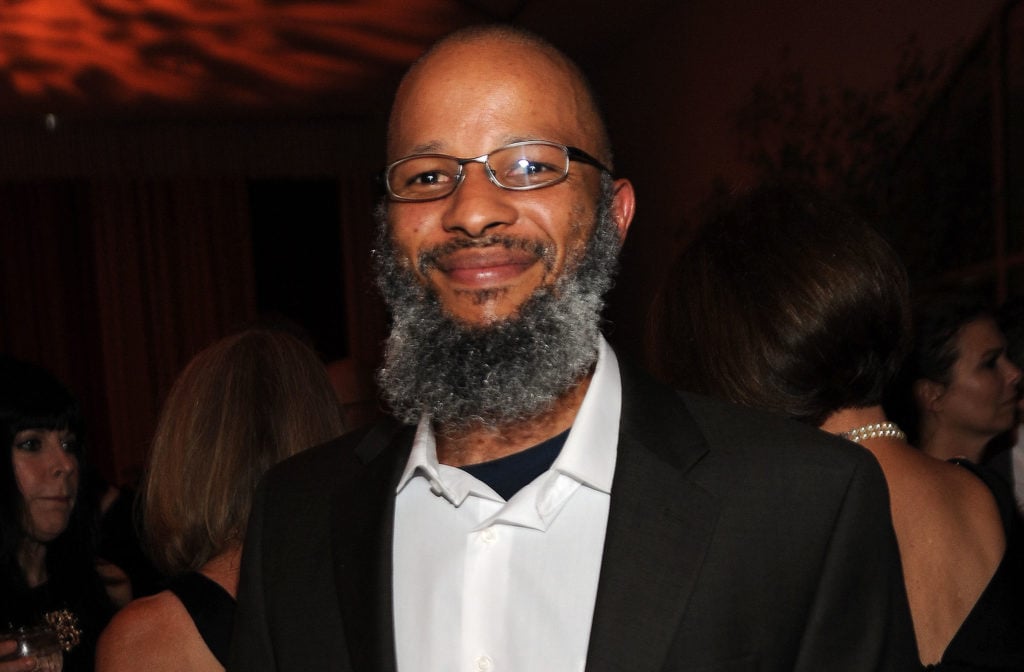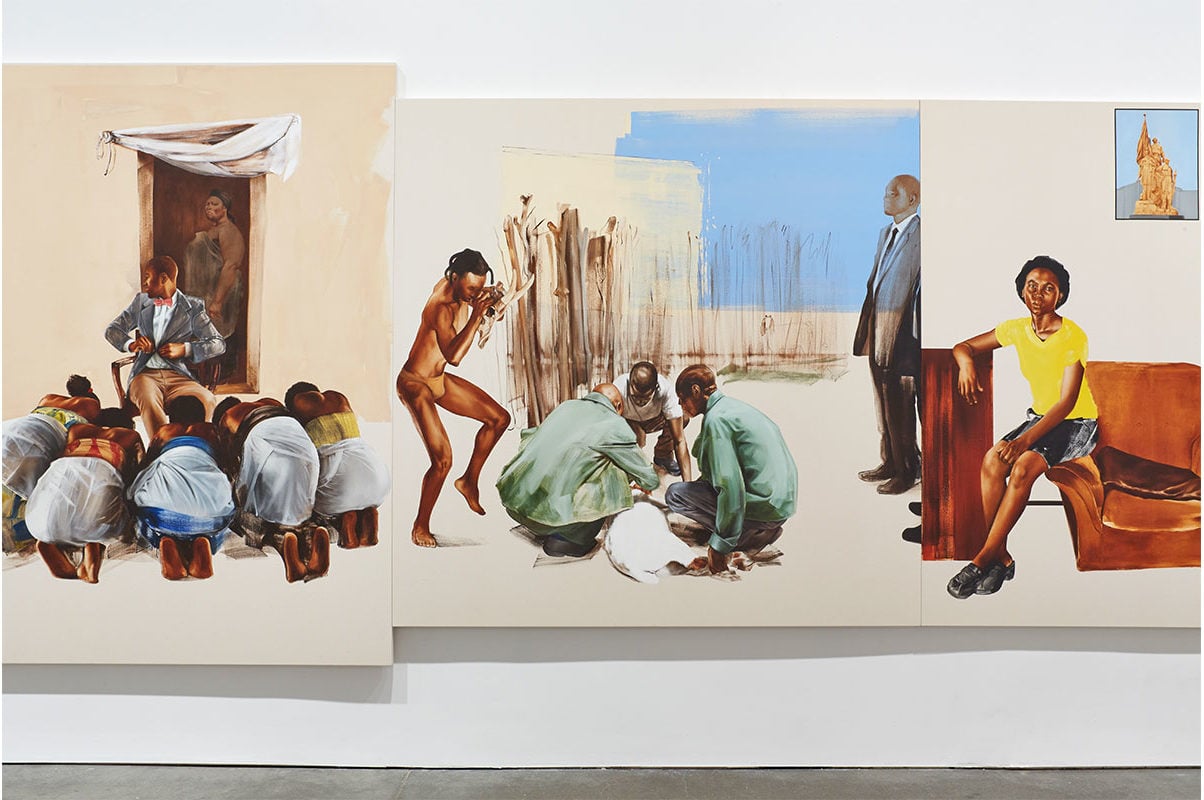On View
A Lot Happened In Jack Shainman’s Basement With Artist Meleko Mokgosi
The artist marks his New York debut with two hotly-anticipated shows.

The artist marks his New York debut with two hotly-anticipated shows.

Rain Embuscado

Meleko Mokgosi’s enigmatic history paintings are hardly new to the international circuit. Within the last five years, the artist has shown at the Hammer in Los Angeles, Art Basel in Miami Beach, and the Lyon Biennale in France. Tonight at Jack Shainman Gallery in Chelsea, Mokgosi marks his New York debut with two hotly-anticipated shows: “Democratic Intuition: Lerato” and “Democratic Intuition: Comrades II.”
A week before the opening, I ventured over to Shainman’s 20th Street location, with recorder and notebook in hand. Mokgosi was in the middle of install, and within a minute of arriving on scene, he gave me a gentle push away from the ground-floor exhibition space and we walked down the stairs to the basement, where prints by Richard Mosse hang (another artist in Shainman’s stable). Curious gallery assistants and art handlers shuffled to and from the back offices, stealing glances from time to time.
When I told him I’d be recording the conversation, Mokgosi swiftly, albeit politely, insisted against it. “Sometimes,” he said, “my words are taken out of context.” (The admission was fair, but it left me wondering how Interview Magazine‘s Matt Mullen was able to capture his studio visit).

Installation view of Meleko Mokgosi’s “Democratic Intuition” (2016). Courtesy of the artist via Jack Shainman Gallery.
Broadly speaking, Mokgosi’s precaution with misinformation mimics a central problem his projects grapple with: “the difficulty of cultural translation,” as artist Malik Gaines once put it. But with little more than past works, previous interviews, and what I could glean from an obtuse exhibition statement, the nature of my questions had few other places to turn beyond, well, him.
Mokgosi comes from Francistown, Botswana, a city of roughly 100–150,000 along the country’s eastern border with neighboring Zimbabwe. Though he was formally trained in the United States, the artist focuses much of his artistic output in depicting scenes of quotidian life in the southern African region.
During the hour-long interview, Mokgosi raised a number of matters that touched on the substance of his practice—namely the difficulty he encounters in translating his experiences without losing the element of nuance. “I have to fight grand narratives,” he explained. By this he means the infinite number of cliches associated with African life that often color Western imaginations.

Installation view of Meleko Mokgosi’s “Democratic Intuition” (2016). Courtesy of the artist via Jack Shainman Gallery.
Looking back at previous exhibitions like “Pax Kaffraria,” his large-scale paintings, which he storyboards into quasi-narrative configurations, are laden with material and compositional references drawn from the Western art historical canon. His decision to engage with art commonly referenced in college textbooks is an effort to “undo how people think about the post-colonial.” In this framework, Mokgosi’s project takes aim at issues of representation. “It’s as basic as that,” he said.
Despite his academic leanings, Mokgosi claims to be the everyman. “[The subjects in my painting] are just ordinary people of southern Africa, and I’m invested in this space because I’m one of them,” he said. “My work is also about love, and fun, and sharing jokes. The post-colony is not just about critique.”